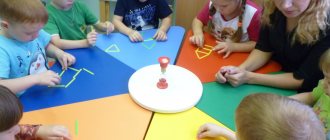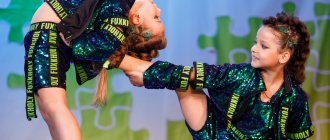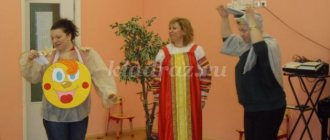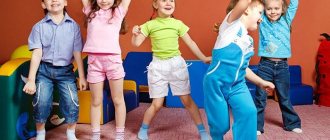Dexterity, grace, plasticity, flexibility, ideal posture and excellent physical shape are not a complete list of what dance classes can give your child. Choreography for children liberates and gives a sense of self-worth, develops communication skills in a team and reveals individuality, and for some it can become a real start in life and open the way to worldwide popularity.
All this, combined with an individual approach, attentive attitude and a subtle understanding of the nuances of working with children, will be given to you by the “School of Modern Choreography”. We invite children from 3 years old to choreography classes for children in small groups in the following areas:
- classical choreography;
- jazz;
- stretching (stretching);
- general physical training (GPP);
- professional variety and competitive choreography;
- choreography for figure skaters.

General physical training for children
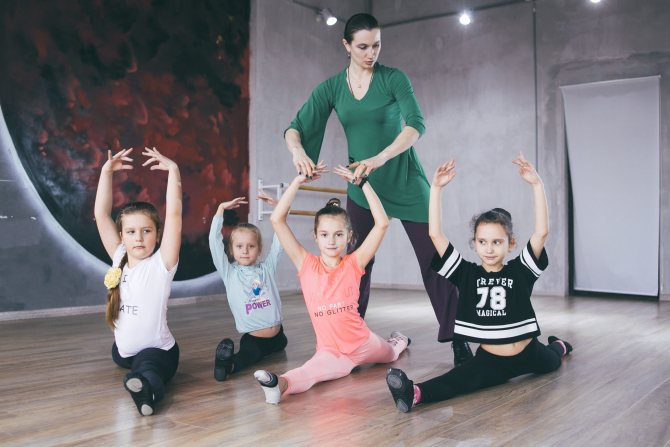
Stretching for children
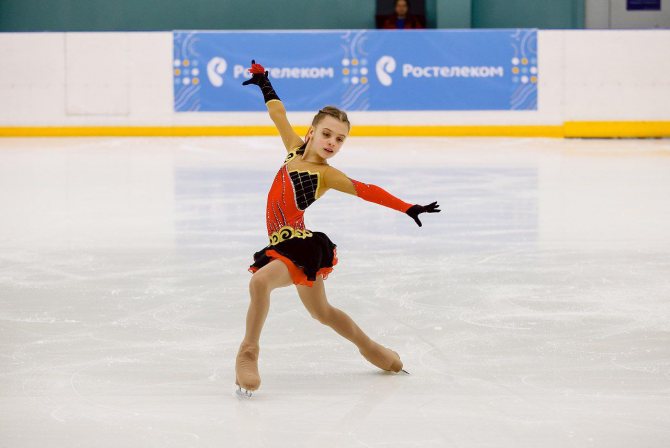
Choreography for figure skaters
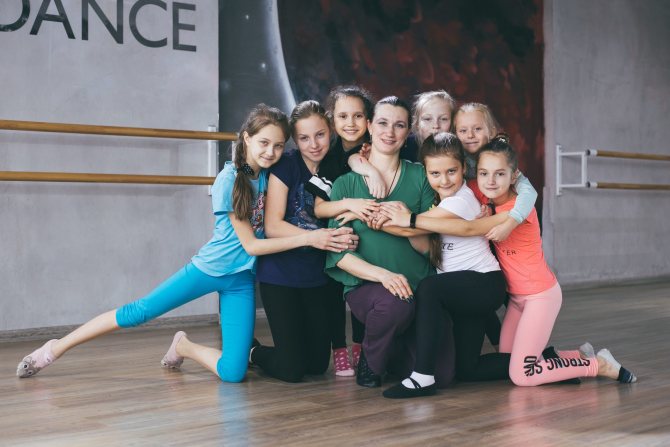
Variety and competition group

Jazz - dancing for children
Classical choreography for children
What type of dance to choose for a child aged 3, 4, 5, 6, 7, 8, 9 and 10 years old
Each child is a bright individual with his own unique set of abilities and talents. The task of parents and teachers is their maximum disclosure and development. Therefore, doubts often arise about where it is better to send the child and in which direction he can manifest himself best.
When choosing a specific direction, you need to consider:
- age; (you can start classes with a child as young as 3 years old, but in general it’s good to start classes with children 5, 6, 7, 8, 9 and 10 years old)
- level of physical fitness;
- child's preferences.
Every caring parent understands that it is the child’s desire that is put at the forefront. This is the only way to not only give him a happy childhood, but also to maximize his potential, instill in his child a love of sports and self-confidence.
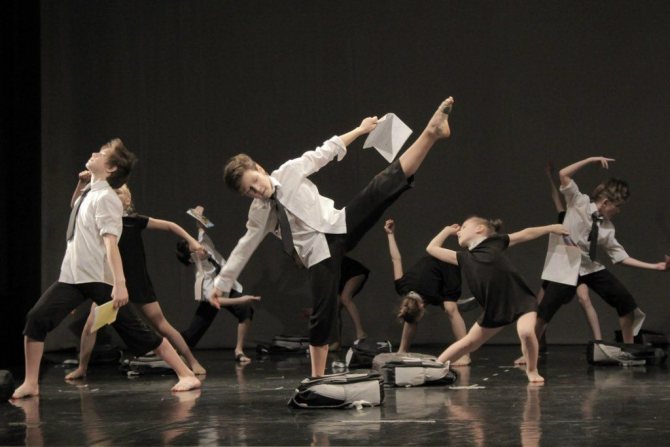
Whatever you choose, classical ballet or modern choreography for children, stretching classes or general physical training, we will be able to lay a solid foundation for the harmonious physical development of the child, develop flexibility, plasticity and coordination of movements. Regular classes will help instill musicality and creatively enrich a growing dancer, teach them to overcome difficulties, not give up and continue to work on themselves no matter what.
In our work with children, we treat everyone carefully and do not judge or compare with others. For us, the first place is the self-improvement of each child and the disclosure of his inner potential and talent, so that he develops day by day. For those who strive for a professional career, the “School of Modern Choreography” will provide the opportunity to go through all stages of development under the strict guidance of experienced mentors and achieve maximum results.
Dance classes
Choreography for children is, first of all, about gaining confidence at a young age. In the process, the child realizes himself as an individual, directing his energy to self-development.

Lesson plan
The initial task of the choreographer is to introduce children to classical movements, therefore children's choreography includes the following basics:
1. Position of arms and legs.
2. Individual movements.
3. Formation of posture.
4. Outdoor games with learning dance sketches.
After this material is mastered, the dance becomes more complex, and then new compositions are added. Choreography for children is always accompanied by various pieces of classical and folk music, as well as children's songs and modern rhythms.
The benefits of choreography classes for children
It is difficult to overestimate the benefits of choreography for children. Regular classes allow children and schoolchildren to:
- develop an ear for music;
- feel the music, understand the classical works of famous composers;
- develop correct posture;
- gain a sense of balance;
- increase coordination of movements;
- improve physical fitness, stretching and flexibility, etc.
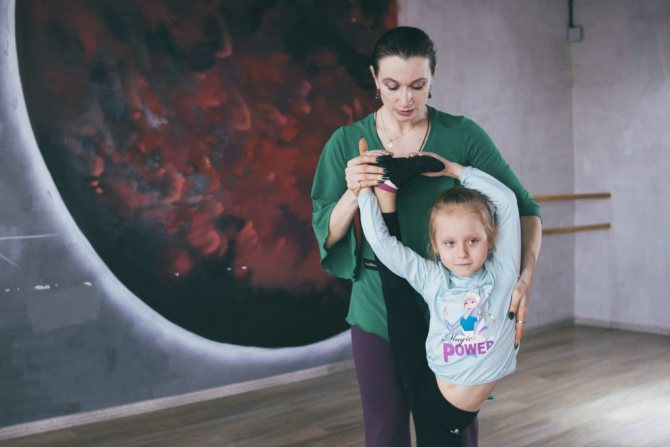
Choreography for children from 3 years old is aimed at general strengthening of all muscle groups, stretching, acquiring group work skills and, of course, learning the first bright dance numbers.
Not only girls, but also boys study at the “School of Modern Choreography”. Although we will not deny that their number is not the same. But this gives boys huge advantages, because they will definitely get the best male roles in ballet performances. And beautiful posture, a slender, well-developed body, strength and agility will be an additional, but extremely important bonus for guys.
In our work, together with children, we overcome difficulties, together we rejoice and experience failures, we look for ways to solve problems and achieve success. The child’s regular participation in creative competitions, festivals, city concerts and the genuine pride of parents in their child’s achievements is our main joy!
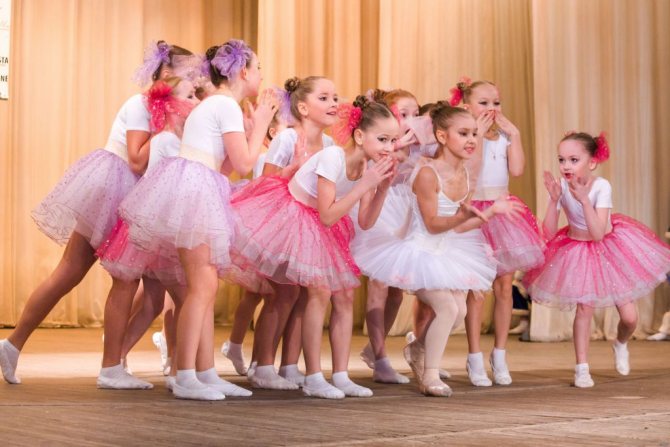
Creative and intellectual development
Choreography is a creative activity that allows you to develop your imagination, sense of rhythm, hearing, and the ability to maintain a given pace.
Classes also develop:
- the ability to feel and understand music;
- the ability to express your thoughts and feelings through the creative process;
- memory (at each lesson, kids have to remember new movements and steps);
- intelligence (scientists have found that when dancing, new neural connections are formed and the processes of thinking formation are accelerated).
During classes, children are introduced to the classics of world culture. Children learn to distinguish between musical styles, they develop their own preferences, and develop the ability to understand music.
At what age can you sign up for choreography for children?
The School of Modern Choreography accepts children from 3 years old. Such an early start to classes provides many advantages, as children develop more harmoniously physically and spiritually. And the base received in preschool age will become a reliable foundation for further classes in ballet, modern choreography or other sports.
Every child can enroll in the “School of Modern Choreography” and continue their education as an adult. Classes are held in small groups, divided depending on the age of students and level of physical fitness. After all, some are just beginning to comprehend the interesting science of choreography, while others come with an already solid base. Therefore, we individually select a group for each new child.
For the youngest, the lesson lasts 45 minutes, for older groups the training lasts 55 minutes. Due to their age, children cannot practice continuously, so for them exercises are replaced by play and rest, and choreography classes for children are built on a smooth transition from simple to complex, with constant repetition of the material covered and gradual complication.
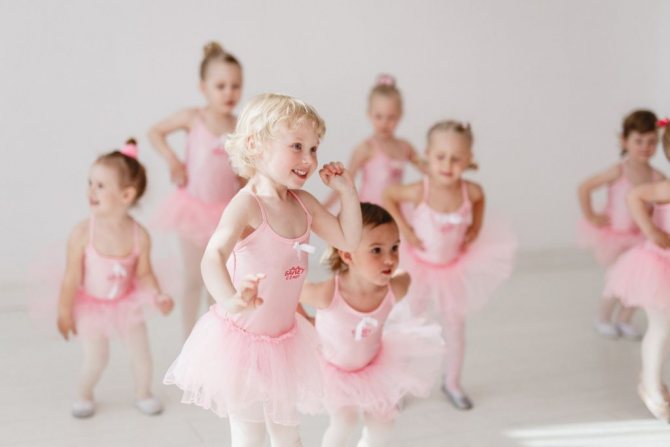
The school regularly holds reviews in a harmonious atmosphere, which allow us to assess the success of each child, his individual achievements and make a forecast for the future, which gives a powerful charge of motivation for further studies and obtaining greater results. Thus, with us, each child develops in the most comfortable rhythm and positive atmosphere.
Choreography for preschoolers and schoolchildren differs from classes for adults, because each child, regardless of age, needs to find his own approach, interest him, entice him to dance and inspire confidence in the choreographer. Adults make their own informed decisions and come to the “School of Modern Choreography” with a clear understanding of what they want to achieve and what efforts they are willing to make. Therefore, classes with children are often held in a playful way, immersing them in situations from fairy tales. As a result, kids sincerely begin to love dancing, go to classes with joy and develop both their body and imagination.

Choreography in kindergarten (information for parents)
Gulfiya Adieva
Choreography in kindergarten (information for parents)
Choreography is a synthetic art. It allows you to solve problems of physical, musical-rhythmic, aesthetic and, in general, mental development of children. Dance classes not only teach you to understand and create beauty, they develop imaginative thinking and imagination, and promote harmonious plastic development.
Dance is the richest source of a child’s aesthetic impressions and forms his artistic “I”
as an integral part of the instrument of “society, through which it draws into the circle of social life the most intimate and most personal aspects of our being.”
(Vygotsky L.S.)
Formation of posture, culture of movements, facial expressions, development of musical taste increase the child’s self-confidence. Improving the coordination of movements helps to increase the child’s communicative activity. High expressiveness and emotionality of classes have a positive impact on the mental well-being of preschoolers.
It has been proven that practicing movements to music is of particular importance for children, because movement exercises primarily train the brain, the mobility of nervous processes (research by N. A. Bernstein, V. M. Bekhterev, M. Fildenkrais’s technique, etc.) At the same time At the same time, movements to music are one of the most attractive activities for a child, a game, an opportunity to express their emotions and show their energy.
It is hardly possible to dispute the fact that childhood is especially receptive to beauty - music, dance. And this allows us to look at choreographic education in preschool institutions as an important and necessary process in the development of children.
Methods and techniques
When teaching choreography, traditional methods are used: visual, verbal and practical. Let us highlight what is common to their use in all age groups.
In the visual method, this is primarily a constant combination of visual-auditory and visual-visual techniques. The performance of music must be accompanied by a show every time. And how artistic and vibrant this combination is, so effective will be the teaching of rhythm. When performing a piece of music, the teacher must creatively comprehend and convey the composer’s intention; in folk music, one should take care of the artistic level of its processing. The display of movement must be well thought out in advance: it is relatively easy to demonstrate the actions of individual characters (a hare, a bear, a fox)
and it is much more difficult to develop the plot of the game or various round dance formations. In this case, the musical accompaniment on the piano can be replaced with a recording, humming a melody, to which the music director, paired with the teacher, demonstrates the movement. Sometimes the teacher turns to children for help, having previously prepared them for the necessary actions. But sometimes all this is not enough, and then an explanation is given at the same time as the show.
The teacher can also use tactile-muscular visualization, i.e. touching the child to clarify the position of the head, individual parts of the body, straighten posture, etc. This technique is typical for early and junior preschool
The verbal method (conversation about the nature of music, its means of expression, explanation, story about its images, reminder, evaluation, etc.) is widely used in the process of teaching rhythm, both independently and in combination with visual and practical methods. Its use is unique in that it consists of selecting individual techniques and dosing them depending on the type of rhythm and the age of the children. Thus, figurative story telling is more often used when learning the game (especially in the younger group)
; to explanation, reminder - in exercises, dances; the assessment becomes more reasonable in the middle and senior groups, etc.
When using a practical method (repeatedly performing a specific musical-rhythmic movement)
It is especially important to first
“work out”
the elements of running, jumping, jumping, manipulating objects, etc. in the introductory, preparatory exercises, and then include them in games, dances and round dances. This structure of classes makes it easier to master the skill, and the child can focus on the images, the mood of the music and its transmission in expressive movements. At the same time, you cannot turn preparatory exercises into training; it is necessary to put them in an interesting, entertaining form, using game and partially competitive methods for this.
in choreography classes in kindergarten ; control is carried out in the form of competitions, demonstration performances, and creative activities. The children take great pleasure in becoming a jury and evaluating and analyzing the performances of their peers; the main organizer and judge is, of course, the teacher. Each lesson uses creative tasks and games. For example: the competition game “Dance with us, dance better than us”
in which children in groups come up with dance moves to the given music and show each other, and then teach everyone their movements. Creative tasks are selected according to the topic of the lesson, the children’s abilities and age characteristics.
— personal approach to learning.
It is especially necessary to comply with this condition in the first and second years of study, when the correct positioning of the body, legs, arms, and head is developed. Also, when learning new material, it is very important to take into account the individual characteristics and motor capabilities of each child. When staging pair dances, personal preferences are taken into account and the right to choose a partner is given at will. Thus, the following condition for the effectiveness of the work is met:
- positive emotional background of classes.
Psychologists have found that knowledge acquisition increases by 50% with a positive background in classes. This is achieved through a selection of outdoor games, creative musical tasks, and friendly relationships between teacher and student.
- timely elimination of errors in performing motor actions.
-special training of the teacher, ideal demonstration of all motor actions
- appropriate musical design (variety in genre: classical, pop, folk, children's music ; character: cheerful, perky, calm, sad, playful).
Principles that must be followed when preparing and conducting choreography :
1) systematic teaching: from simple to complex; from the known to the unknown; from easy to difficult.
2) accessibility (students’ preparedness must correspond to the specifics of the tasks being solved)
3) consistency (lesson load and the learning process are distributed sequentially)
4) variety, non-stereotype (exercises, dance movements should include different starting positions)
In classes, frontal, individual, group forms of organization, and their combinations are used.
To solve motor problems in classes, the following methods are used:
a) repeated
b) integrally dissected
c) competitive (competitive)
Teaching dance movements occurs in stages:
Stage 1 – initial learning.
At this stage, motor ideas about the action at each support point and the execution of the movement as a whole are formed.
Stage 2 – detailed training.
A complete, detailed basis for the movement is formed, and actions are clarified in parts. Movements are practiced through multiple repetitions of elements and the movement as a whole.
Stage 3 – consolidation and further improvement. Learned dance movements are combined into an etude, a dance, a scene. Pupils, showing creativity, independently come up with compositions from learned elements. They are used in games.
When working with preschoolers, special attention is paid to mastering imitative and figurative play movements. These movements begin the development of imaginative thinking and imagination, the development of motor qualities, plasticity, and dexterity. For example: game exercises “bunnies”
,
“balls”
,
“springs”
,
“cuckoo clock”
- movements of the head and neck,
“cat”
- exercises for back flexibility, etc. These movements can be offered with musical accompaniment, under the word, in game situations, and also in dance compositions. For example: a dance composition based on
the children's song “Grasshopper”
. First we learn the song, the children introduce and show the characters of the song, how they understand their role. Then the dance movements are learned one verse at a time.
The development of creative thinking is associated with the development of mental processes: perception, memory, imagination and speech. Many compositions combine performance of demonstration movements and free, independent performance of movements.
In the process of musical-rhythmic education, attention is focused not only on teaching movements, but also on the analysis of internal processes that are the regulating basis of movements to music.
Rhythm classes in preschool educational institutions may include the following sections:
1. Igroplasty
Tasks:
development of muscle strength and flexibility,
The child gains peace, openness and inner freedom.
2. Finger gymnastics
Tasks:
development of manual skills, fine motor skills,
enriching the child’s inner world,
having a positive effect on improving memory, thinking,
development of fantasy.
3. Game self-massage
Tasks:
hardening and healing of the child’s body ,
giving the child joy and good mood,
formation in the child of a conscious desire for health, the skill of self-improvement.
4. Musical and outdoor games
Tasks:
promote the development of musical ear, memory, attention, the ability to coordinate movements with music;
develop speed-strength and coordination abilities,
develop skills of independent expression of movements to music.
Techniques of imitation, emulation, figurative comparisons, role-playing situations, and competitions are used.
5. Game gymnastics
Task:
promote the child’s mastery of various types of movements.
The section includes drill, general developmental, acrobatic exercises, as well as tasks for relaxing muscles, strengthening posture, and breathing.
6. Game rhythms
Task:
contribute to the development of the child’s sense of rhythm and motor abilities, allowing him to beautifully and coordinately perform movements to music, in accordance with its character, rhythm, and tempo.
7. Igrodance
Tasks:
promote the formation of dance movements in children,
bring aesthetic joy to those involved.
The section includes dance steps, elements of choreographic exercises and elements of various dances: folk, ballroom, modern.
8. Dance and rhythmic gymnastics
Tasks:
develop skills of plasticity and grace of dance movements,
develop coordination and flexibility, bring emotional joy to those involved.
https://files.mail.ru/D5F3FA7CB0F348BFB8F823255B20F3F0
How often should you exercise
Regular exercise twice a week will bring good results, but to get the maximum effect from training, it is recommended to exercise 3 times a week. Sometimes children and their parents decide to attend individual training. This is especially true when preparing to participate in a performance or wanting to work more closely on stretching or artistry.
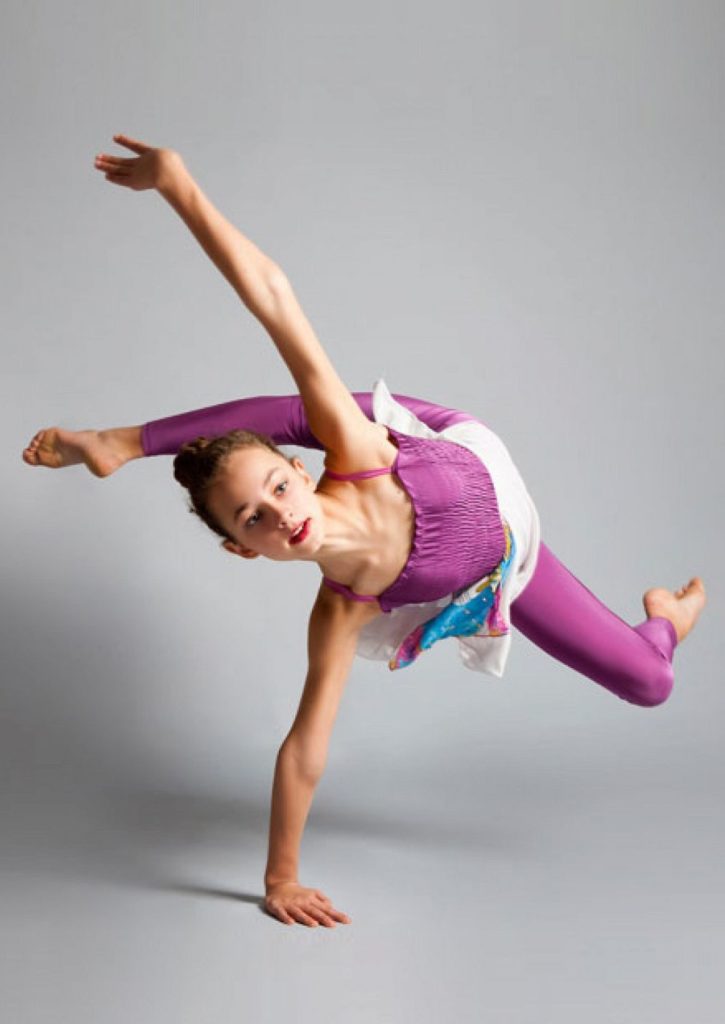
Choreography for sports ballroom dancing
Very often, choreography is used as a compulsory subject for other professional areas, for example, sports ballroom dancing. Due to the complex coordination of this sport, the main work and time of coaches is devoted to the main ballroom dancing program, so choreography classes are conducted by a choreographer on a separate day. But this class is mandatory for ballroom dancers. As you can see, there’s no escape without choreography.
Classic for children
The ballet choreography program is very serious. After all, this is not just a dance - a way of life. All feelings and emotions require maximum dedication, work, and time. Although all efforts are not in vain, because ballet is at the top of the cultural hierarchy and requires special treatment. This art combines beauty, as well as perfection of form, associated with the depth of the inner world. It is possible to learn multiple movements, but growing as a person, feeling the music, movements, and creating an image in dance is the most difficult thing. Not everyone knows how to perceive a melody deeply, with full responsibility, but only a few. Therefore, it is important to teach your child this quality.
